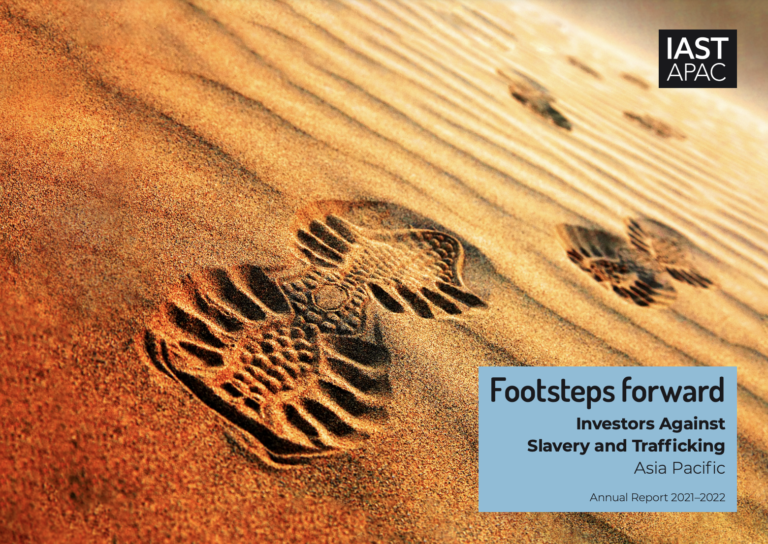Human Trafficking Assessment Tool for Educators
GuidanceA trafficking assessment tool for educators to identify and assist potential child victims of trafficking, including both labor and sex trafficking indicators.
The authors are a group of investors working to help end modern slavery, which currently affects an estimated 40 million people globally, with 70% of that number estimated to be in the Asia-Pacific region. IAST APAC was established in 2020, based on the belief that investors can play a meaningful role in creating a better world, through collaboration and co-operation.
The authors’ work is focused on engaging with companies in the Asia-Pacific region to promote effective action in finding, fixing and preventing modern slavery in operations and supply chains.
IAST APAC comprises 37 investors with AU$7.8 trillion in Assets under Management (AUM), together with the Australian Council of Superannuation Investors (ACSI), Walk Free and the Finance Against Slavery and Trafficking (FAST) initiative. See Appendix 1 for a full list of members.
By using our leverage as allocators of capital, and sharing the resources of our knowledge partners, Walk Free and FAST, we hope to build a sense of momentum among the companies we invest in, so that they can work with us on ending modern slavery.

A trafficking assessment tool for educators to identify and assist potential child victims of trafficking, including both labor and sex trafficking indicators.
Large infrastructure and industrial Projects can have adverse impacts on people and on the environment. As financiers and advisors, we work in partnership with our clients to identify, assess and manage environmental and social risks and impacts in ...Read More
This report is the second of two reports developed by IHRB in cooperation with Equidem Research & Consulting. Building on "Responsible Recruitment: Remediating Worker-Paid Recruitment Fees", this publication offers practical guidance to businesse...Read More
Part of the International Labour Organization (ILO) Asia-Pacific Working Paper Series. Written by Lorenza Errighi, Ivanka Mamic, and Birgitte Krogh-Poulsen. In recent decades, the Thai seafood sector has expanded on a global scale by using foreig...Read More